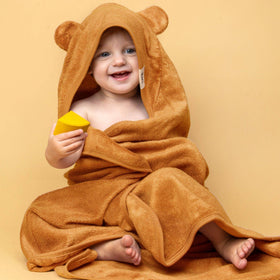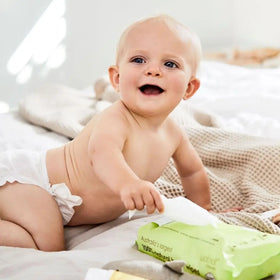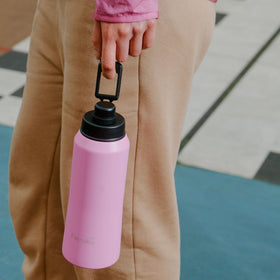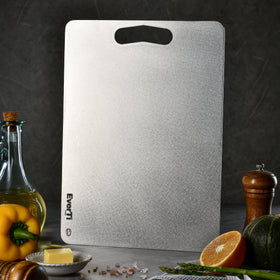
Are any of the number 7 plastics safe?
Are any of the #7 plastics safe? One of our most popular posts is about the numbers on plastics, where we discuss which plastic is safe to use. So, is number 7 plastic safe? In that post, we mention that not all #7 plastics are toxic. But there are significant potential hazards of using #7 plastics, such as in baby bottles. Not all plastics are recyclable or reusable, and it’s crucial to understand the different types of plastics and their recyclability. Given that some #7 plastics cannot be recycled, this adds to the environmental challenges associated with their use.

But how do you know which #7 plastics are safe? Many sources, like National Geographic, will tell you to avoid most plastics, including #7.
That’s a handy guide for safe plastic grading, but it doesn’t help if you’re looking at a product with a #7 on it and wondering, “Is #7 plastic safe?” For example, certain food storage containers use #7 plastics, which raises concerns and confusion about their safety due to the materials used despite companies assuring consumers that these products are safe.
Do you know your recycling codes for plastics?
It's important to remember the different types of plastics and their associated recycling codes. There are seven main types of plastic:
- #1 – PET or PETE (nylon) is the most commonly recycled plastic
- #2 – HDPE (high density polyethylene) is used in milk jugs and detergent bottles
- #3 – PVC (polyvinyl chloride) is commonly used in construction, plumbing pipes, medical devices and in some food containers
- #4 – LDPE (low density polyethylene) is commonly used in food containers and plastic bottles (even squeezable bottles).
- #5 – PP (polypropylene) is used in bottle caps, lids, and tableware
- #6 – PS (polystyrene)is found in disposable cups and packaging materials
- #7 – Other. Number seven seems to be the dumping ground for all other types of plastic. These recycling codes are essential for identifying and correctly recycling different types of plastics.
Plastic #7 is a category that includes various kinds of plastic and can sometimes be challenging to recycle. Therefore, it's important to understand the specific composition of plastic #7 and whether it can be recycled effectively.

Some of the most common #7 plastics
#7 Plastics are commonly used in various household products, such as food and plastic containers, including ice cream containers, lids, and takeaway containers. These plastics are also used in plastic bottles and cooking oil bottles. As plastic number 7 encompasses various subtypes, it's crucial to determine which ones are considered safe plastics.
Here are some of the most common number 7 plastics:
PLA plastics
PLA plastics are bioplastics made from polylactic acid from starchy renewable resources like corn and tapioca. They are often used in food packaging due to their biodegradability.
Some manufacturers of eco disposable nappies also use PLA as a material in a nappy's top sheet (inner lining) or back sheet. These materials aren't processed with bisphenols or phthalates, hence are considered safe.
PLA is a flexible plastic used for various types of wrapping and packaging. Since it also biodegrades, it's a better environmental choice. PLA plastics are opaque, and manufacturers want to let you know they're a better ecological choice. Packaging will confirm that this #7 plastic is a PLA plastic and is safe to use.

Polycarbonate (PC)
Polycarbonate is a clear, rigid plastic, and it’s marked with #7 PC. It is often found in baby bottles and other plastic food packaging and, again, is marked with a #7 recycling symbol.
It’s not recyclable, and it contains BPA (Bisphenol A). It’s the baddie of the #7s. It’s nowhere near as common as it used to be in baby products, but there’s still much of it. Generally, if you find a clear, hard plastic product without a number on it, it’s PC 7 plastic. This one isn’t safe.
Tritan
Tritan is a rigid, clear co-polyester plastic. It's an alternative to PET plastic, commonly used in food and drink containers. According to the manufacturer, Eastman Tritan, it's BPA free and made without using any bisphenols. They also say that it has no estrogenic or androgenic activity. However, a quick search on the internet brings some doubt about this. Eastman Tritan was involved in a court case against a scientist who claimed that Tritan did contain estrogenic chemicals. Although Eastman Tritan won this case, some sources report that their testing methods were faulty and that research was at least partly funded by a chemical industry body.
While some research suggests that Tritan is a safe plastic, it's important to remember that this body of research may not be entirely independent. Therefore, it's crucial to err on the side of caution and use Tritan with cold liquids only. As with any other plastic, it's best to avoid using it in the microwave.

ABS, AS/SAN plastics
Some examples of plastic under #7 include acrylonitrile styrene (AS) or styrene acrylonitrile (SAN), as well as acrylonitrile butadiene styrene (ABS). ABS plastics are commonly used in household products like kitchen utensils, containers, appliances, toys, plastic bags, and packaging materials. On the other hand, AS and SAN plastics can be found in items like food containers, cutlery, and toothbrushes.
ABS, AS, and SAN plastics are high-quality materials known for their toughness, rigidity, and resistance to high temperatures and chemicals. Despite containing styrene, a toxic element, these plastics are stable and don't leach toxins, making them safe for use. Their safety is further assured by their thermoplastic nature, which enables them to melt easily without the need for additional chemicals like bisphenols or phthalates in their production.

ABS = Recyclable!
ABS is the most commonly used of these plastics, as it's even more rigid than AS plastic or SAN plastic. A key point in its favour is its recyclability, which encourages responsible use. It's opaque and often labelled as BPA free.
ABS is also used to make Lego blocks and many Yumbox bento and lunch boxes' outer boxes. Because it's a safe plastic material, toy brands like Connetix, Kinderfeets, and Candylab also use it.
 |
 |

|
TPE plastics
Greenpeace commissioned a report to explore alternative plastics that could replace PVC in toys. The report highlighted TPEs (thermoplastic elastomers) as a potential substitute. TPEs refer to a group of plastics, some of which are considered safer than others. TPEs often consist of copolymers, which are blends of two or more types of plastics. They can be used in soft plastic forms for various applications.
TPEs are commonly used in items like produce bags and other flexible packaging. However, one type of TPE, known as thermoplastic polyurethane, involves using large amounts of chlorine during manufacture, making it an environmentally unfriendly choice. Not all TPEs are also free from plasticizers, which could contain harmful substances like BPA or phthalates.
Are some TPEs safe to use?
Some TPEs are indeed safe to use, such as medical-grade TPEs free from phthalates, PVC, bisphenols, or latex. TPEs are generally considered safer than PVC. To ensure the safety of TPEs, it's best to ask the manufacturer for their test results or material safety data sheets (MSDS). Reputable companies regularly test their materials for safety and can provide you with safety certifications upon request.
Is Plastic 7 BPA free?
Is plastic with the number 7 BPA free from harmful chemicals? Our general rule is that if it's clear plastic marked with the number 7, it's not free from BPA. There are some exceptions, like Tritan plastic, but if you're unsure, it's best to avoid them. However, opaque plastics with the number 7 are generally considered safe.
#7 Plastics: Separating the Safe from the Unsafe
When it comes to #7 plastics, it's important to know they include various materials with different safety profiles. Always check your products' recycling symbols and plastic recycling codes to make informed choices, especially for items like baby bottles and food storage containers.
Look for products labelled as BPA free and, where possible, opt for plastics known for their safety and recyclability. Remember, not all plastics are the same, so be mindful and prioritise your health and the environment when choosing plastic products.










